Today is the traditional start of autumn in the Northern Hemisphere so it seems fitting that headlines this week focus on stories about climate trends and forecasts. As always I encourage you to comment, ask questions and provide input on topics I write about or feature.
Arctic Sea Ice Update – Is Less Better? Not According to Scientists
Last week the annual Arctic ice minimum was reached. It’s a funny thing. The peak heat of summer arrives 3 months before the ice melt reaches its minimum. What’s so different about this year’s minimum? Arctic sea ice shrank to 3.41 million square kilometers (1.32 million square miles), the lowest summer minimum observed since we began studying sea ice by satellite. In fact this year’s minimum is 50% lower than the average calculated from observations between 1979 and 2000.
At the Centre for Earth Observation Science, University of Manitoba, research scientists have expressed concern not just about the minimum. David Barber, Director of the Centre, describes the remaining sea ice that has not melted as “rotten” almost to the North Pole.
And what does he mean by “rotten?” Here’s his exact quote: “The multi-year ice, what’s left of it, is so heavily decayed that it’s really no longer a barrier to transportation.” He goes on to state that the ice surface looks like Swiss Cheese and that a ship could have traversed the North Pole this year, that’s how much thinning occurred. Barber forecasts that by 2020, plus or minus five years, the Arctic ocean will become seasonally ice free. Should we be worried?
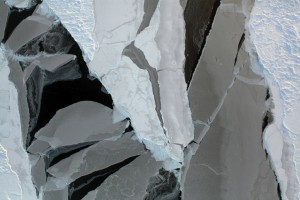
Boreal Forests in Northern Canada May Awaken as Our Atmosphere Warms
The Arctic Archipelago in Canada’s north was once the site of oak, willow, pine, spruce and hickory forests. That was 2.6 million years ago. But not today because these northern islands are permanently frozen, or at least, frozen right now. Scientists studying these ancient mummified forests, such as Alexandre Guertin-Pasquier, of the University of Montreal, believe that changing Arctic temperatures may result in the re-emerging of boreal forests on these remote northern islands.
The trees of these ancient forests grew when average annual temperatures were around 0 Celsius (32 Fahrenheit). Compare that to current average temperatures of -15 Celsius (5 Fahrenheit) and now look at annual mean surface temperatures in regions north of 64 degrees latitude and how they are trending, a rise of 2.28 Celsius (4.1 Fahrenheit) from the mean average between 1951 and 1980. Should temperatures continue to rise, will the trees come back? Probably but it will take some time.
For Guertin-Pasquier there is an additional mystery. How did trees in the past survive in the darkness of northern winters above the Arctic Circle? The mystery may soon be resolved should the Arctic continue to warm throughout the 21st century.
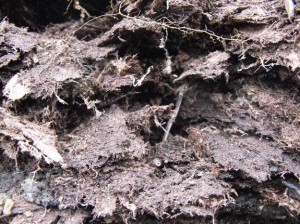
Global Powers Fight for Resources Uncovered by Climate Change
For every victim there is a victor. The victims of climate change in the Arctic are the people, the animals and the plants that will find their world a very different place. For many it means extinction. The victors, on the other hand, governments, energy and resource developers, and owners of shipping companies, who are salivating at the potential wealth that a warming Arctic may yield.
The action in the Arctic involves Greenland (nominally Denmark), the United States, Norway, Sweden, Iceland, Finland, Canada and Russia. All have territorial claims on islands and coastal waters. At stake are rare earths, oil, gas and other minerals. Joining these Arctic countries are other global players with China leading the pack to have the Arctic declared a near-state with United Nations observer status, and to have the wealth of the Arctic shared by all humankind.
Forgotten in all this fighting for potential wealth is the issue of climate change and its impact on Arctic indigenous life. Instead of putting global policies in place to mitigate human impact on climate the community of nations are building up military presence, leasing offshore oil and gas exploration properties, prospecting for minerals to locate future mines, and sending ice breakers and ships through the Northeast and Northwest Passages. This August a Chinese ship navigated the Northeast Passage from the Bering Strait to Europe. Others will soon follow. What will this mean for the native Inuit people? What will it mean for polar bears and other Arctic wildlife?
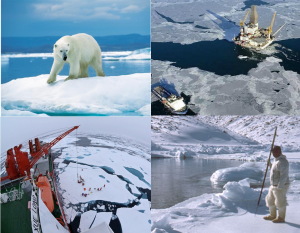
Ocean Temperatures Update – New England and Atlantic Canada Waters Heating Up
This week, NOAA, the National Oceanic Atmospheric Administration in the United States, reported record high temperatures in water off the coast of New England. At the Bedford Institute of Oceanography, in Nova Scotia, Canada, coastal water temperature measurements were 2 Celsius (3.8 Fahrenheit) degrees higher than normal.
The NOAA study also reported that the warmer temperatures were coincident with cod migration in coastal waters. The cod shifted north. This could have ramifications for many other ocean animal species. Part of a five year NOAA study it is expected that temperatures in 2012 will be the highest seen since monitoring began.
Is this evidence of global warming? No. The study is a local one after all. And scientists are quick to point out that we could see the water temperatures dip in the next few years. But what the study shows is local evidence of what may be a longer-term trend linked to a general rise in temperatures in both the atmosphere and ocean from the mid-latitudes to the poles.
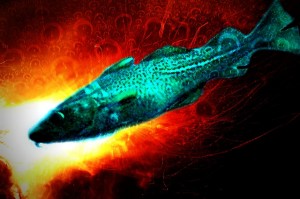
Renewable Energy from Space Proposed to Mitigate Climate Change
Want to stop global warming? Stop burning fossil fuels on Earth to generate energy. Don’t want an ugly wind turbine messing up your seascape or scenic view? Don’t want to cover land with solar arrays, land that could be used for producing food?
Well there’s an answer and it comes from space scientists who want to put large solar arrays in stationary orbit above Earth and beam the energy collected back to the ground using laser and microwaves. This is not a new idea. It has been bandied about for years but the experience with solar arrays on the International Space Station is teaching us a lot about what materials work best in space. And recent innovations in solar panel materials and transmission technologies is starting to make the idea seem palatable.
One major concern has always been, what happens if a bird or an airplane flies through the laser or microwave beam? Will it be diffuse enough not to cause an unintended consequence? Another concern, how to maintain these power sources once in geosynchronous orbit? If something fails will we have backup systems to ensure the lights stay on?
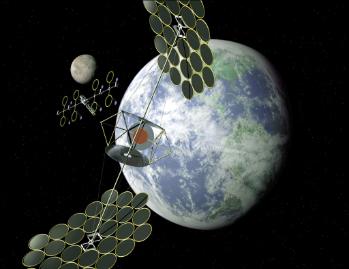
A Postscript
I acknowledge you, my readers, who continue to inspire me to do more research and write every day. If you don’t see a daily posting it usually means I’m digging into a subject to learn more before putting words to electronic paper.
For those who follow me on Facebook, three more “likes” and I can begin to analyze traffic as it comes to that location. To the many thousand of you who visit this blog site regularly thank you for continuing to drop by. If you don’t already know, you can subscribe to 21st Century Tech and get new posting sent to your email inbox.
– Len Rosen
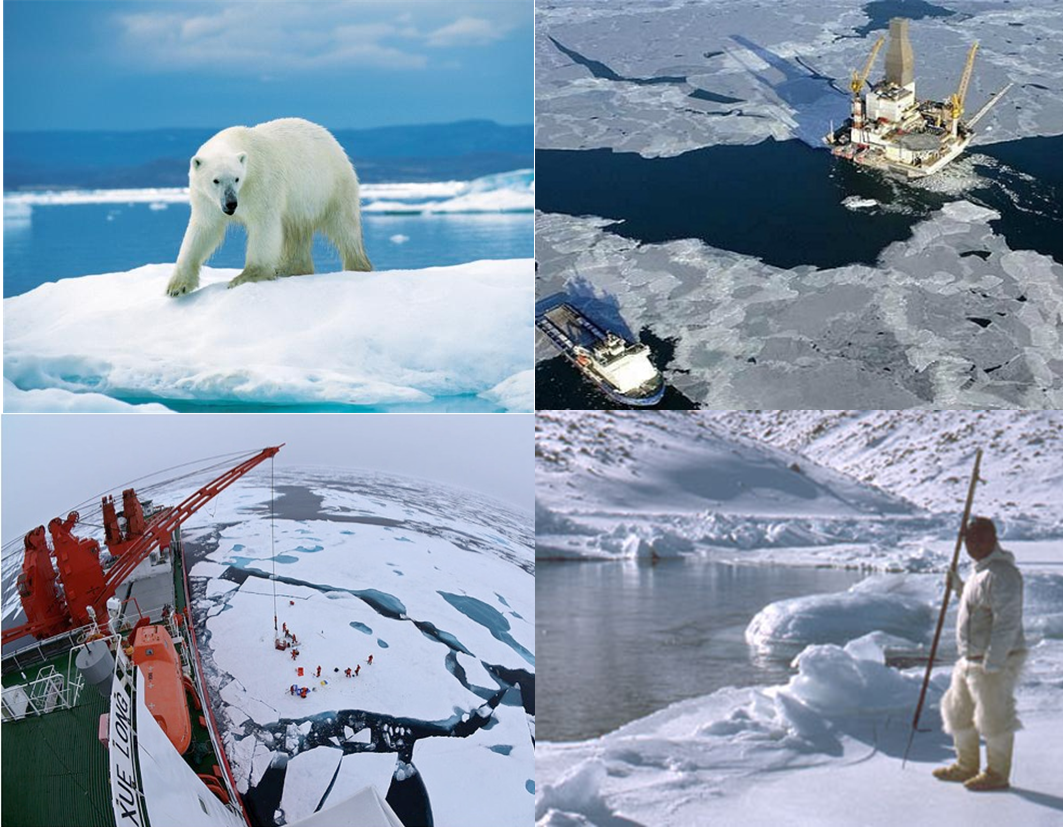









Len, thanks for the blog.
There are a lot of options that can help with the issue of global warming besides the wind/solar technologies.
Research is already close to fruition for LiFTR Thorium reactors (No nuclear waste, no cooling issues, very safe, cheap to build and operate.
There are projects on hand for removing CO2 form the air by direct conversion to hydrocarbons.
As the development of H2 economies continues, there will be less drive to drill and better air to breath. The German goal to have 80% renewables by 2050 continues apace. Germany is the most stable economy in the EU and one of the reasons is that they are relying less and less on the drilling and nuclear power resources. They are at the tip of the industrial revolution, just as England was in the 19th century.
However, it may be that the Arctic problem is past the tipping point unless it is just the tip of the butterfly wing — the chaotic system strange attractors can still kick in with any of the extremes — an ice age or a much more watery world.
The biggest challenges nuclear fission reactors face today are:
1. The age of the current reactors requires them to be refurbished or phased out. They were considered safe for a period of 40-50 years and we are close to the end of their shelf lives.
2. The government regulation requirements for getting a plant approved.
3. The lack of understanding by the public of the new nuclear options including smaller and safer reactors that don’t melt down if an accident occurs.
4. The safe disposal of nuclear waste from the existing reactors.
5. The cost of past nuclear fission plants has made government and utilities timid about investing in new nuclear even though these plants will cost less.
6. The public perception that nuclear is unsafe.
We will remain in the fossil fuel age for at least another 50 years before renewables become predominant. Even then fossil fuel back up systems will remain in place because renewable energy technology will still have to deal with the variability of these power sources.
As for the Arctic, trend analysis suggests we will see a seasonally ice free Arctic Ocean within the next two decades. That’s because as more open water gets exposed each summer it acts as an accelerator to sea ice. The exposed ocean absorbs heat. That in turn degrades the ice further. And that is exactly what we have been witnessing over the past decade with each year (with rare exceptions) contributing to the further thinning and degrading of the polar sea ice cap. And where oceans warm you see accelerated warming of the atmosphere above the ocean surface. My biggest concern is permafrost melt and the release of methane which is a greenhouse gas that has an even more significant impact than CO2.
Len says: “One major concern has always been, what happens if a bird or an airplane flies through the laser or microwave beam? Will it be diffuse enough not to cause an unintended consequence? Another concern, how to maintain these power sources once in geosynchronous orbit? If something fails will we have backup systems to ensure the lights stay on?”
Back in the 70s I got all hot on the idea of solar collectors in space, and did considerable study and calculation on the prospects. While many highly complex, and frankly problematic, elements bear on the question, I’m fairly sure that Earth’s birds and planes will never face the perils of laser beams and microwaves from space. Here’s why: We have no technology that suggests it’s feasible to deliver thousands of tons of payload into geo-synchronous orbit at costs less than $1,000 per pound, and present costs are closer to $5,000 per pound (stipulated that there are presently no good economies of scale). Suppose for every pound of apparatus placed in geo-synchronous orbit the hypothetical total system, including the ground-based systems to harvest the energy produced by the spaced-based pound, delivers a constant 100-Watts of power into Earth’s power grid. Even if we figure out how to place a pound of payload into geo-synchronous orbit for $1,000, for every kWh delivered to an Earth grid the orbital system costs would be $10,000. But there would also be some additional costs of the Earth based receiver, rectifier, transformer, apparatus. Optimistically estimate those costs at $2,000 kW. Present technology wind turbines can probably pump a steady one kW into the grid for total system costs in the $4,000 range. So we are contrasting geo-synchronous orbit space power at $12,000 kW against wind turbines at $4,000 kW. If we have a mechanical problem with a wind turbine, or steam turbine, or combustion turbine, or solar cell farm on Earth, we can send a repair crew in coveralls out to fix it in just a few hours. Unless we find some way to deliver the space-based collector system into orbit for less than $100 per pound, the concept is an economic loser.
But even the magic hypothetical $100 per pound in geo-sync orbit number doesn’t make the project feasible. There is another huge problem that will require some radical new kind of physics. The solar constant radiant energy in Earth orbit is ~ 1362 Watts per square meter. Suppose the orbiting apparatus can capture, transform, and transmit to Earth, fully 33% of that. So we would need 2.2 square meters of collector surface for every kW transmitted to earth. Imagine a 500 MW collector system. It would need a minimum 1,100,000 square meters of orbiting collector area: about 1050 meters, or 3445 feet across. Now here’s the rub. The huge collector surface is subject to constant pressure from radiation and solar wind. Several pounds of thrust would constantly act to push the collector surface further from the sun and destabilize the Earth orbit. Geo-sync communication satellites have only a few tens of square meters of surface area, yet they all have small reactive propulsion systems to maintain their orbits. But the huge beamed power solar collector would have to couple a tiny, but highly important, portion of the energy it collects to reactive mass to maintain its orbit. The system would need enough expendable reactive mass, call it “propellant,” to constantly produce the several pounds of thrust needed to keep orbit. With present achievable specific impulses, the orbiting collector system will be expending several pounds of “propellant” per hour just to hold its orbit. Say 75-pounds per day; 27,000-pounds per year. What is needed is a system that produces counter thrust without expending reactive propellant. Our present understanding of physics still respects Newton’s dictum. “For every action there is an equal and opposite reaction.” The requirement to maintain stable orbit and orientation greatly compounds the difficulties and increases the costs.
Len asks: “Should we be worried?”
White ice reflects a lot of solar radiation. Open Arctic Ocean absorbs most of it. Summer temperatures might rise another 10 F. Warmer surface waters might take a few days longer to freeze over each fall. Your concern over permafrost breakdown and major methane release seems well founded. Regardless of how warm the summers become, the Polar Regions’ sunless winters will still be just as cold. But the winters might not be quite as long.
Where is the study that models what happens to permafrost when the summers are 10 degrees F. warmer and last a few days longer? There are some tricky differential relationships that only empirical tests can define with confidence. Might be the permafrost line will stabilize a foot deeper than present, but it might vanish altogether. If it vanishes, a huge amount of methane will promptly enter the atmosphere. Average atmospheric residence time for a methane molecule is only 8.4 years before it converts to CO2. If the permafrost methane and methane clathrates were to breakdown gradually each summer over 50-years or so that doesn’t sound catastrophic, but if the breakdown should occur over just a decade or so, average temperate zone temperatures might rise 10-15 degrees. Then we should be concerned about enough melting of the Greenland and Antarctic ice caps over a couple of decades to raise sea levels 20-30 feet. After a couple of decades most of the methane would have converted to CO2, the greenhouse gas peak would rapidly decline, and the atmospheric CO2 levels would be in the range of 500-600 ppm and likely stabilized. Looks like sea level could rise a lot faster than it could fall.
It’s no accident that my little ranch out west of Houston is 65 feet above high tide in Galveston. If sea level rises 25-feet, Galveston will be completely submerged and one of the great engineering wonders of the world will be the new 150-mile-long 30-foot high dam surrounding metropolitan Houston. But I will still be high and dry outside the dam, my land value will increase ten fold, and my property taxes will triple. Then I would probably sell out and move to 10-acres in rural Kentucky or Montana.
I have been looking for studies on methane leaching from permafrost. Reuters published an article in May this year on a study in Nature Geoscience that documented the phenomenon. The study was done by University of Alaska Fairbanks. It documents two sources of methane leaks in Alaska, one from decaying matter in 50 lake bottoms in the state, and the other from the edges of receding glaciers in Southern Alaska. The article also stated that similar reports have come from Greenland where retreating ice has led to methane gas release increases. I also found an abstract in Geophysical Research Letters, Vol. 31 where a paper entitled “Thawing sub-arctic permafrost: Effects on vegetation and methane emissions” was published in 2004. The study concluded that methane emissions are intimately related to temperature and hydrology and alterations in permafrost coverage. The study comes from Sweden. And this month the CBC here in Canada posted a report entitled “Permafrost thaw will speed up global warming” citing a study done by University of Victoria in British Columbia. The paper appears in Nature Geoscience. The study predicts that from 68 to 508 billion tons of carbon will get released into the atmosphere by 2100 from thawing permafrost. That’s quite a range and obviously reflects different climate models and temperature predictions. The thing that is most insidious about the melting sea ice and melting permafrost is the process of acceleration that will happen. Move to higher ground is a good strategy and keep out of the path of seasonal storms. I wouldn’t be buying oceanfront property these days unless I plan to own it for only a couple of decades.
Len says: “The study predicts that from 68 to 508 billion tons of carbon will get released into the atmosphere by 2100 from thawing permafrost. That’s quite a range and obviously reflects different climate models and temperature predictions.”
About the only thing I can conclude from that 700% range of predictions is that anyone’s guess is as good as the study’s. The study models are worse than worthless. As I commented, only empirical tests can produce answers in which we can have confidence. The meaningful tests on permafrost and methane hydrate breakdown would be expensive and take years. We should be able to do decent modeling on the Arctic Ocean sea ice. But even that is tricky. The media has sensationalized and ballyhooed the “thinning” Arctic sea ice, and it’s hard to know what to believe. The notion that the Arctic ice is now becoming rotten isn’t particularly credible. The Arctic sea ice has been “rotten” for centuries. The US Navy made compelling empirical proof public in 1959. See the surfaced US submarine “Skate” at the North Pole in 1959: http://wattsupwiththat.com/2009/04/26/ice-at-the-north-pole-in-1958-not-so-thick/
Both Russian and US submarines have routinely surfaced near the North Pole for the last 40 years. Sure there have been places where huge masses of floating sea ice have collided and stacked up to thickness of 20-30 feet. But the average thickness has probably never been greater than 3-4 feet. That’s because ice is a good insulator. Once the surface freezes over, the heat in the water below can only escape through insulating ice that retards the flow. That prevents further freezing. Three feet of Polar sea ice might produce about the same heat transfer characteristics as one foot of Styrofoam. Even if the Arctic wind is blowing 70-mph and the air temperature is minus 60 below zero Fahrenheit, at the ice/sea water interface the temperature is near 32 F. So the begged question is, “How could the sea ice ever freeze any thicker than 3-4 feet?” The answer is it can’t. Only by collisions that stack layer upon layer does the ice ever become thicker than 3-4 feet. But the thickness limit is sort of self-regulating because the “bottom” of the stacked ice is deeper in the ocean where the water is warmer and melts the ice more rapidly. I’m skeptical that the Arctic Ocean will ever be ice free, but I can envision enough thinning that icebreakers can routinely transit near the Pole in the summer months. There would be much more open water and average summer air temperatures would be several degrees higher. That means the permafrost layer will be deeper below the land surface, and more methane will enter the atmosphere. What we need to know is the scale of that effect, and a 700% range of guestimation just isn’t worth much.